Fritz Ober - 2012 - La Leona
Fritz Ober - 2012 - La Leona
Details
Details
Overview
Overview
Shipping important note
Shipping important note
Delivery times are typically reliable and most instruments arrive within the estimated timeframe.
Should any unexpected delay occur, our team will keep you informed and provide support at every step. For all shipping details and exceptions, please see our Shipping Policy.
Details about GPSR
Details about GPSR
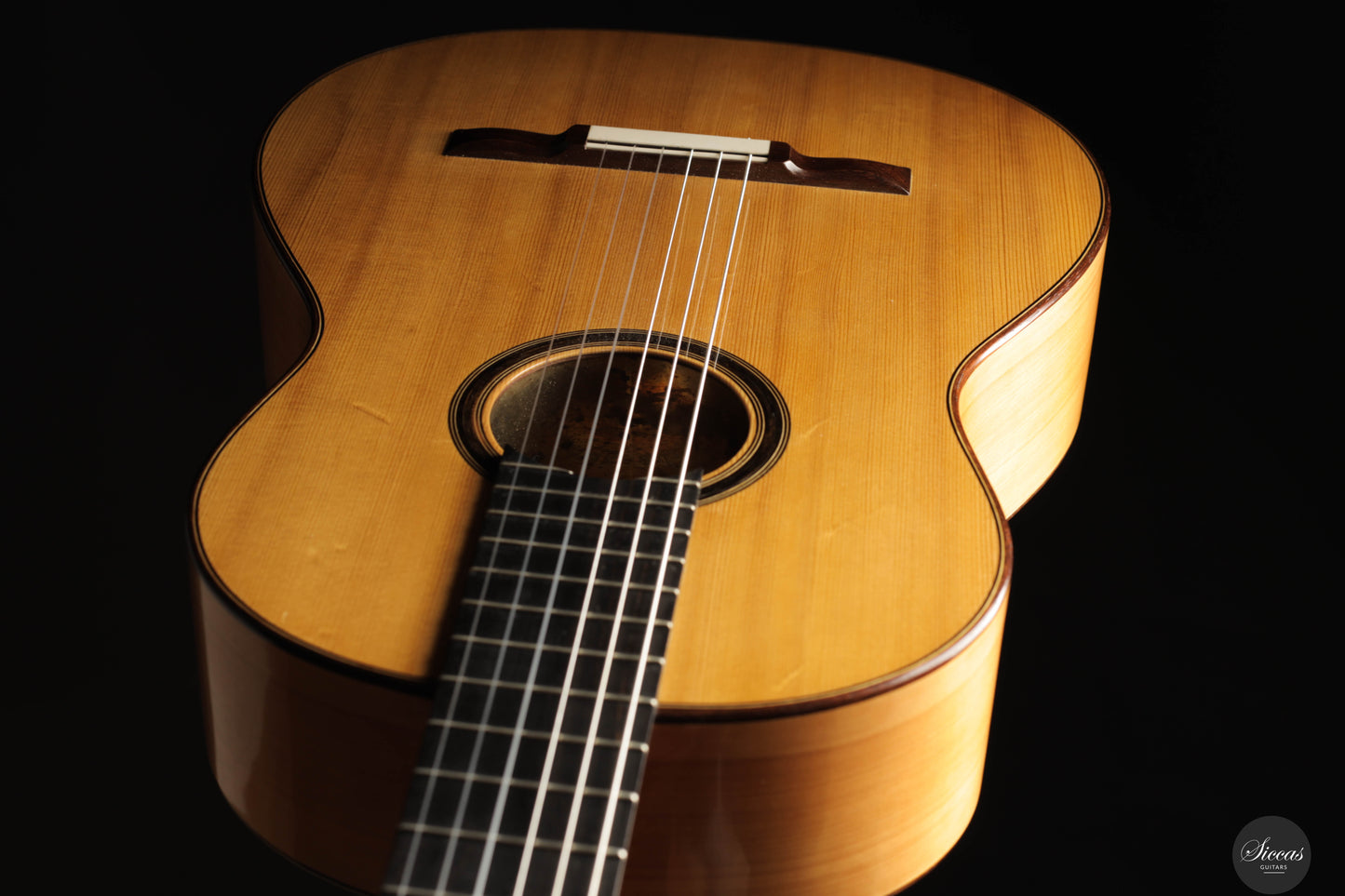
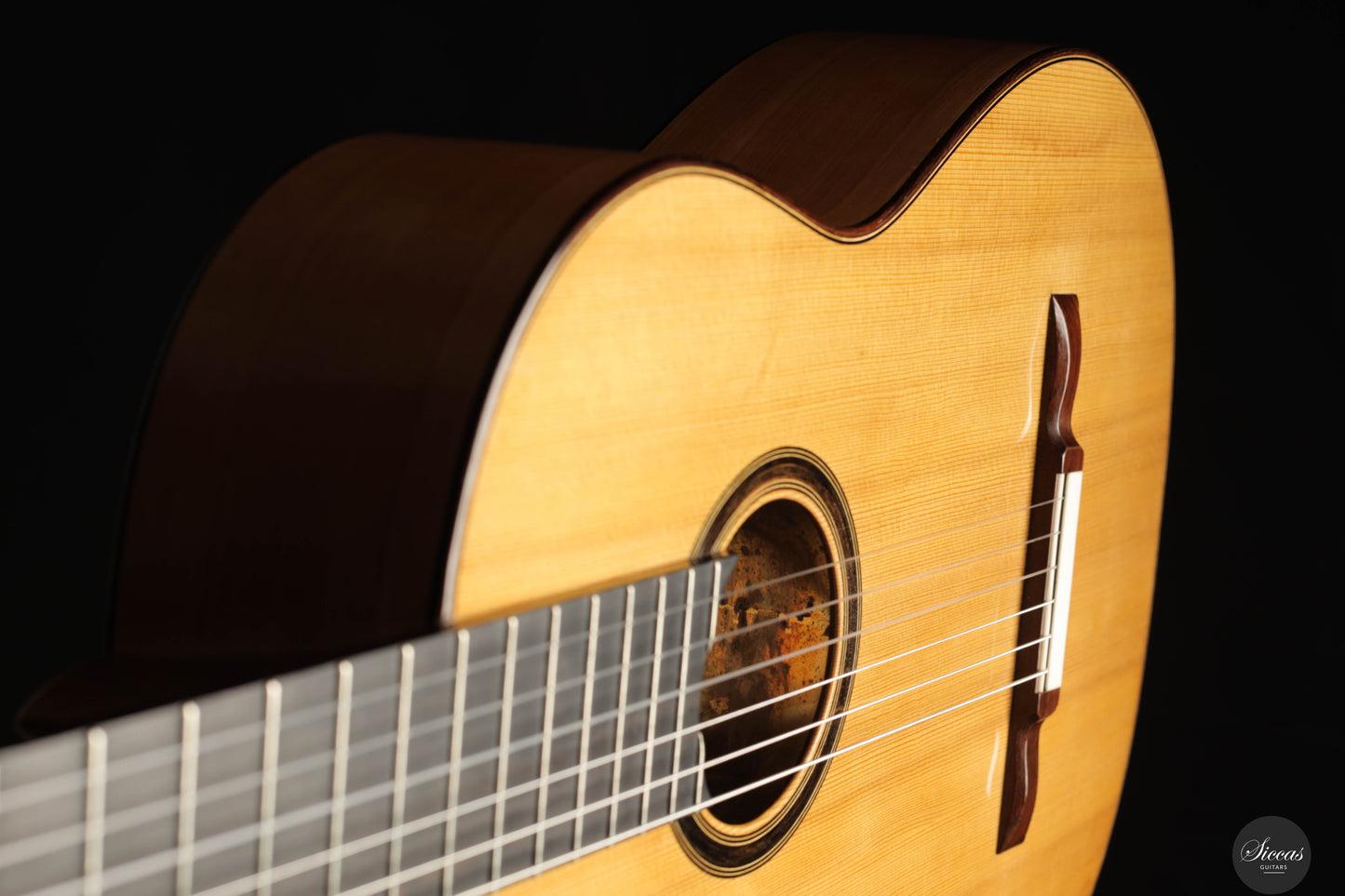
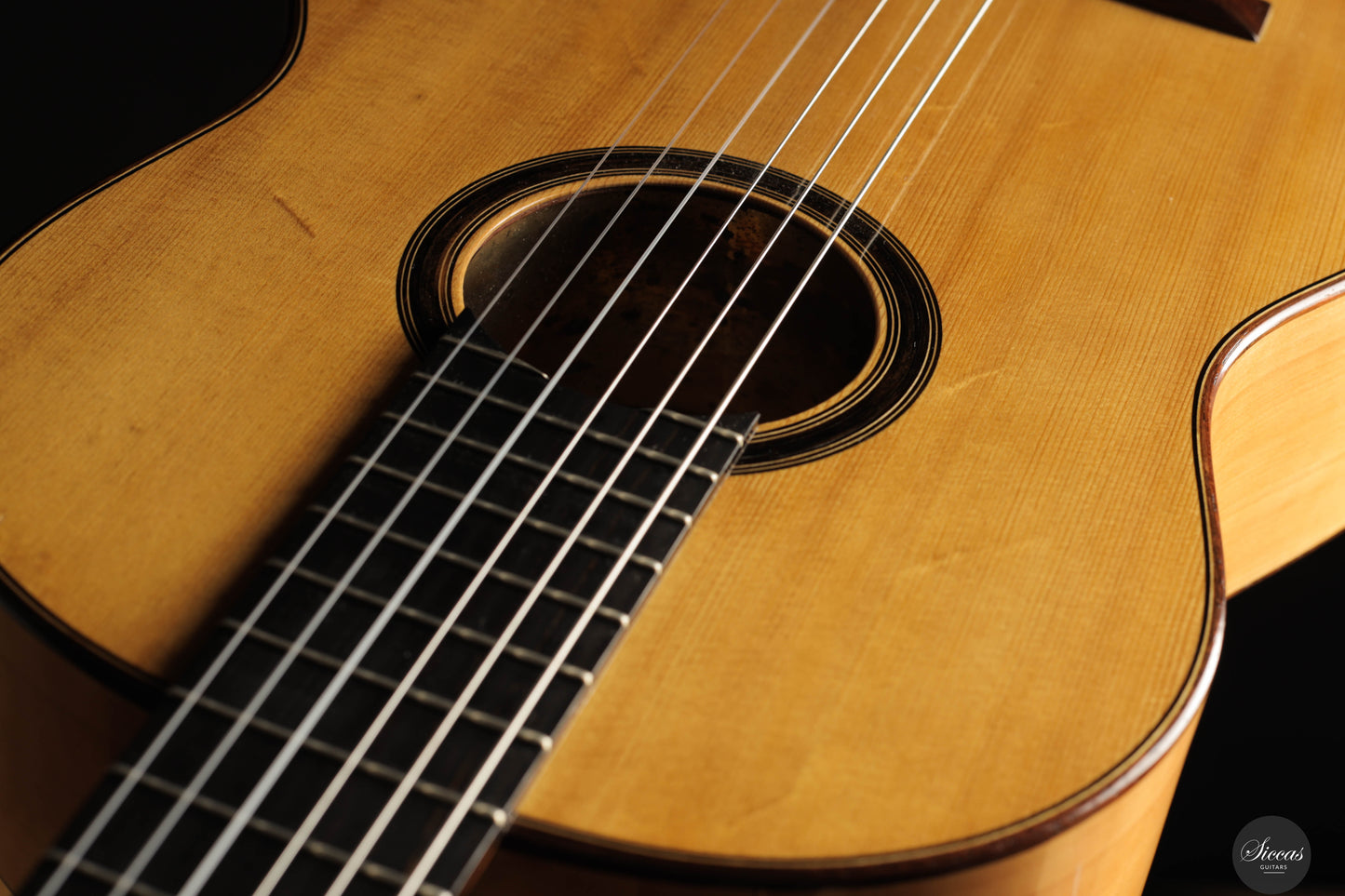
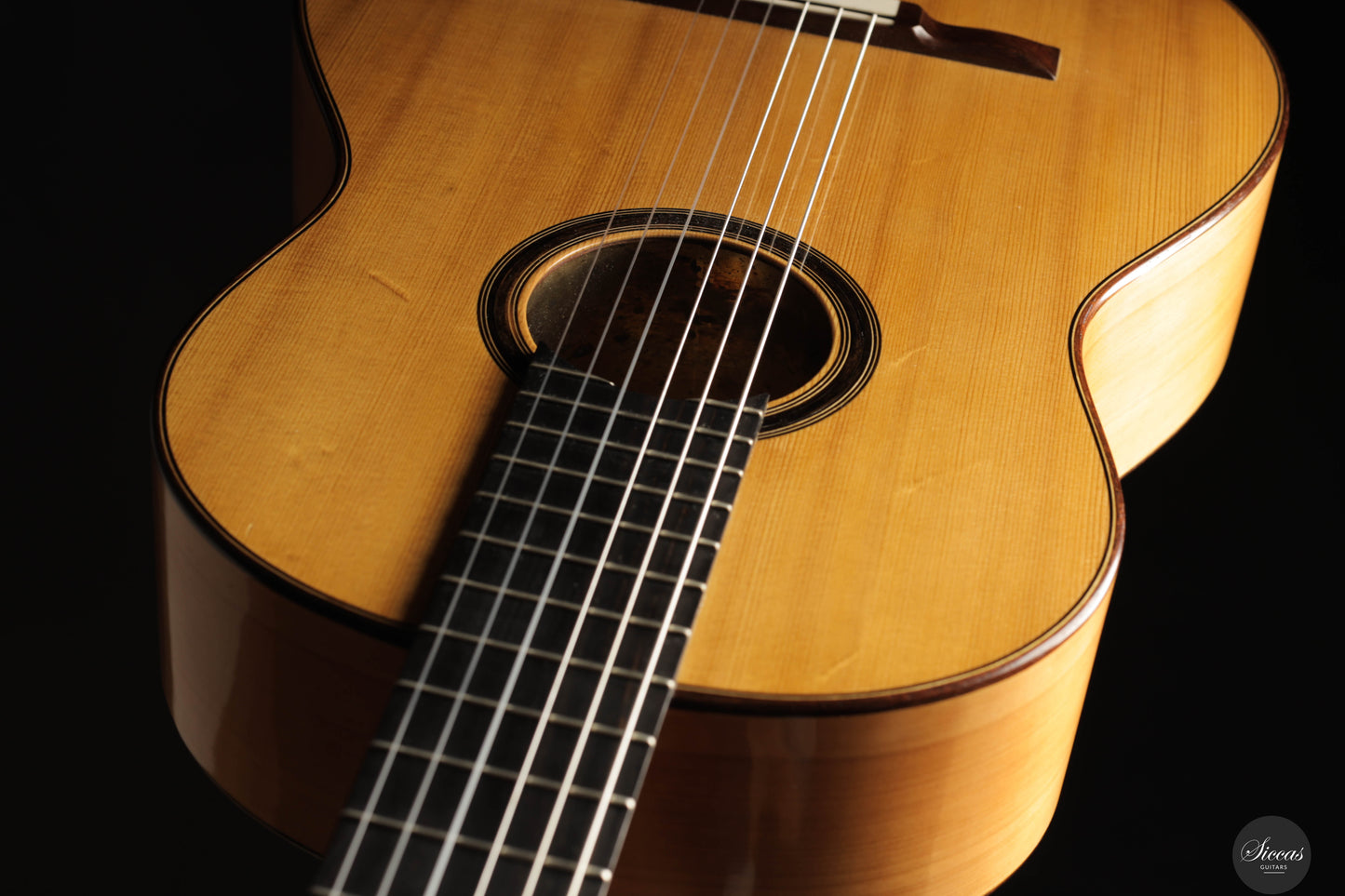
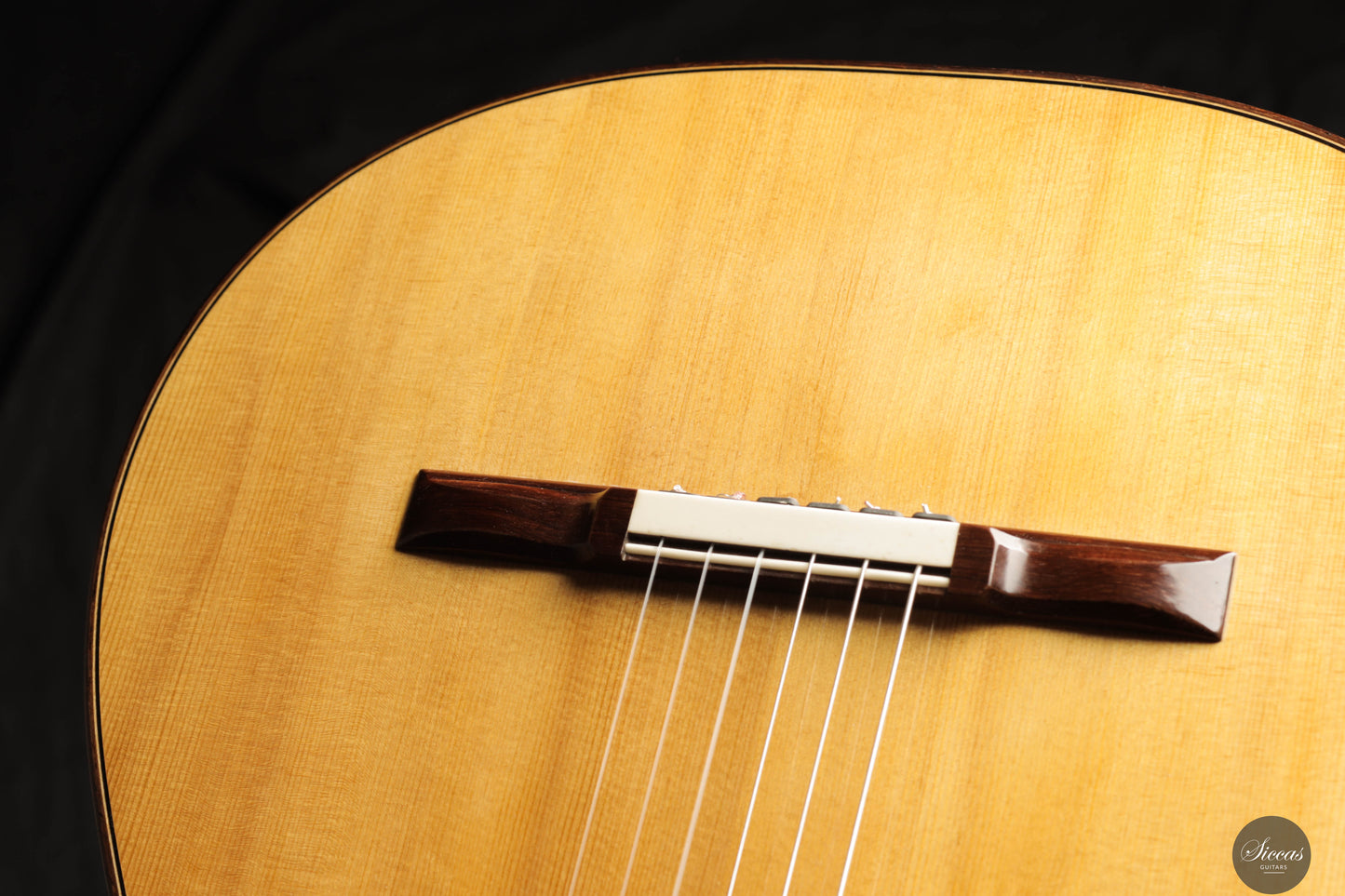
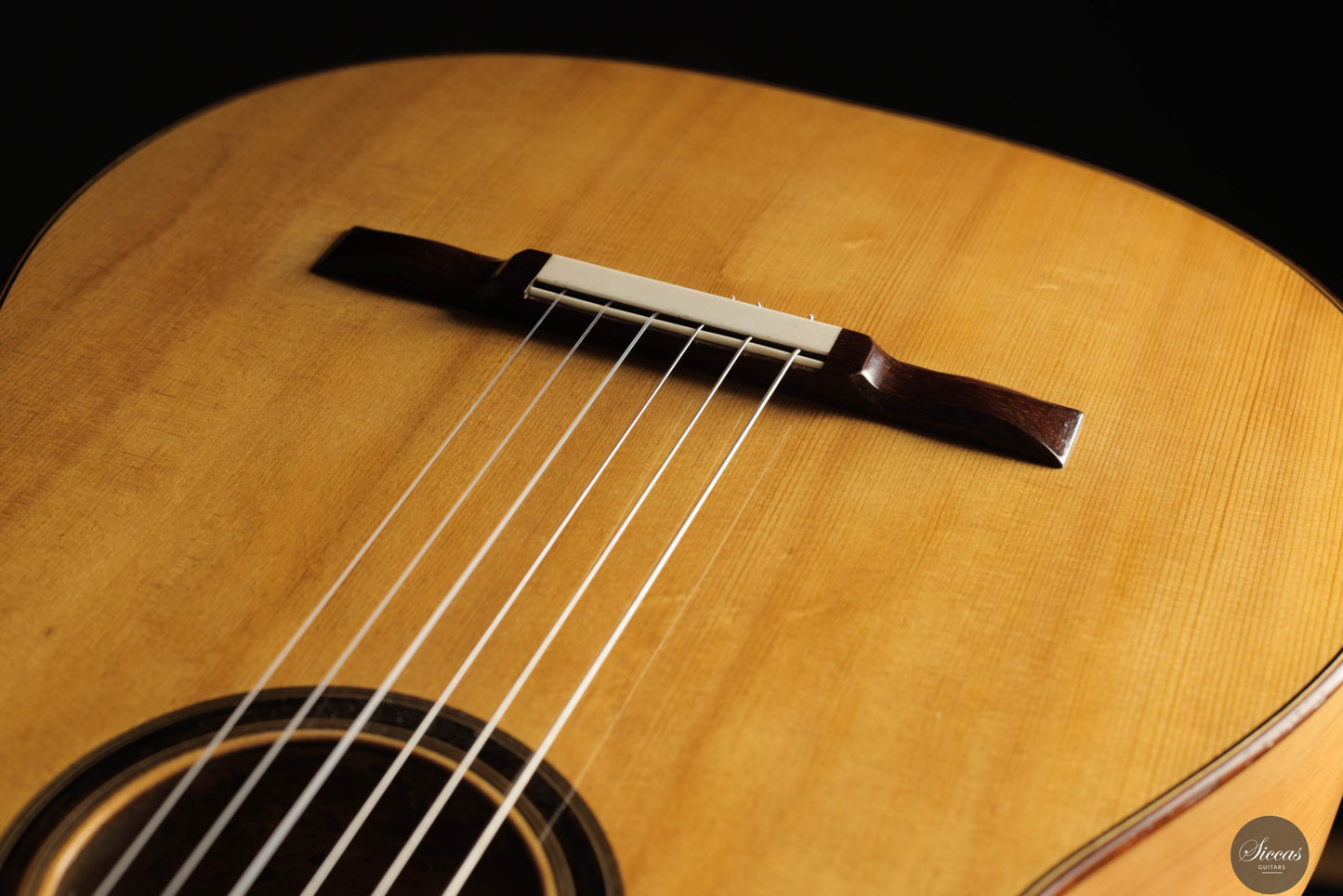
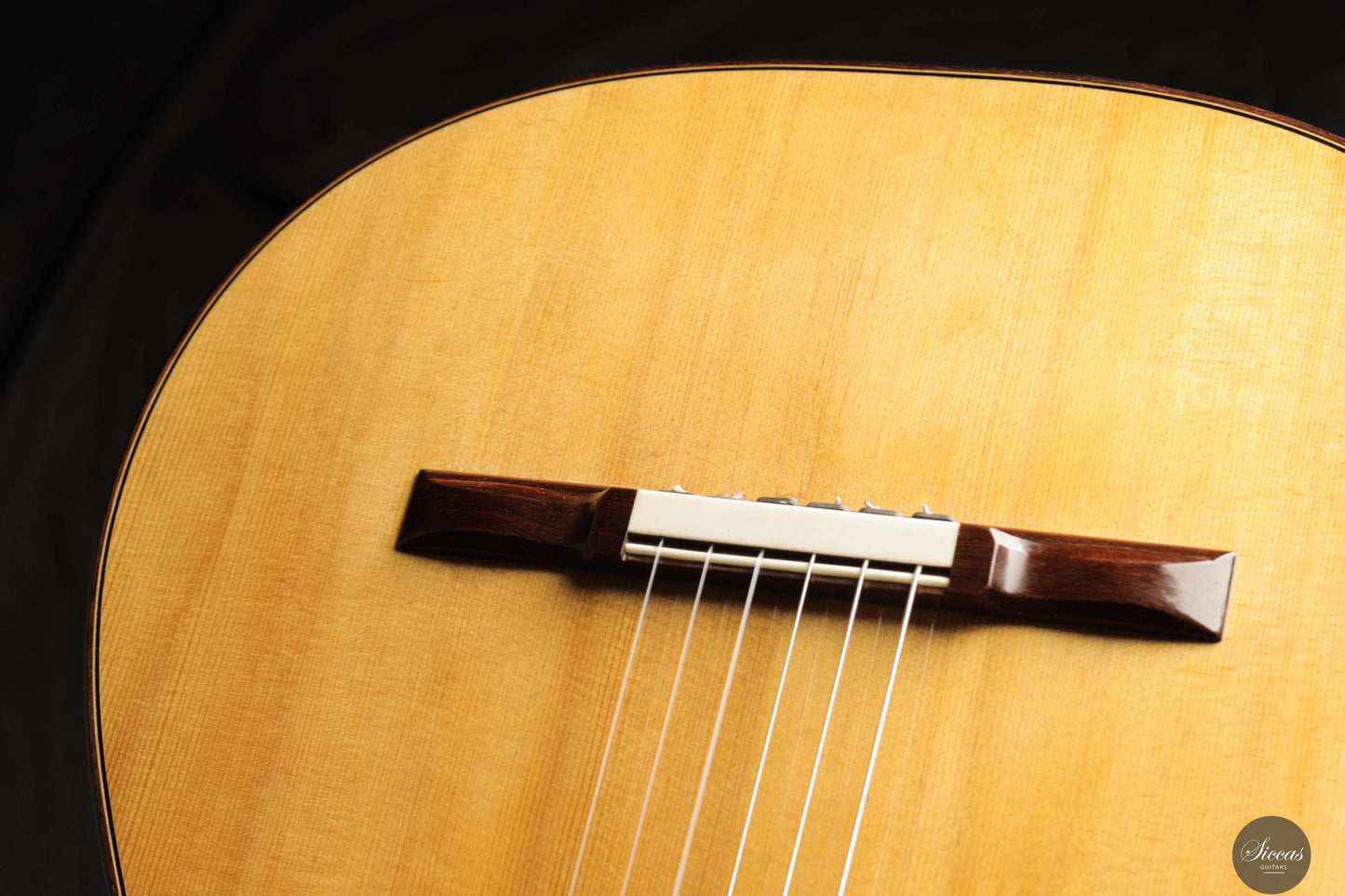
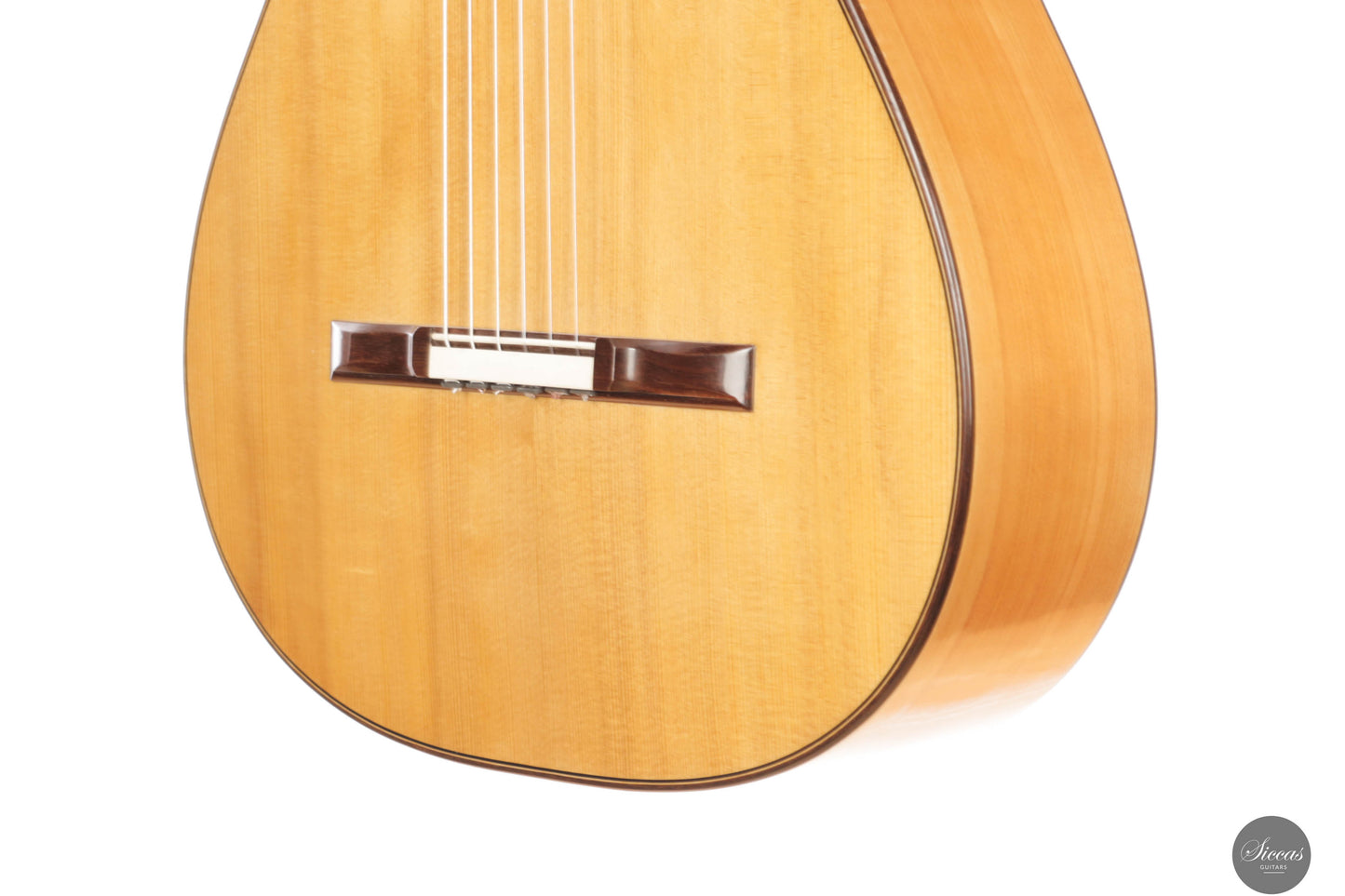
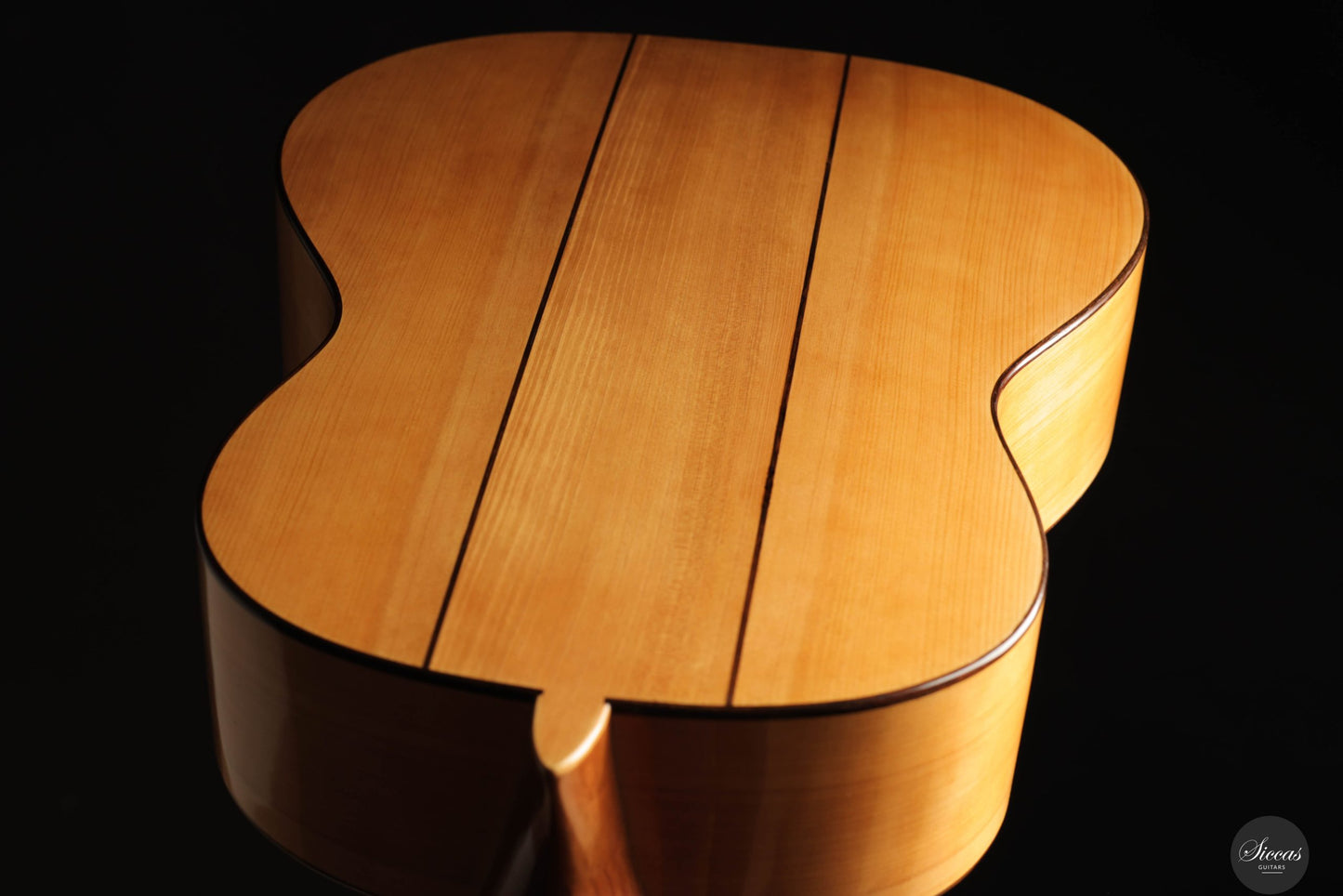
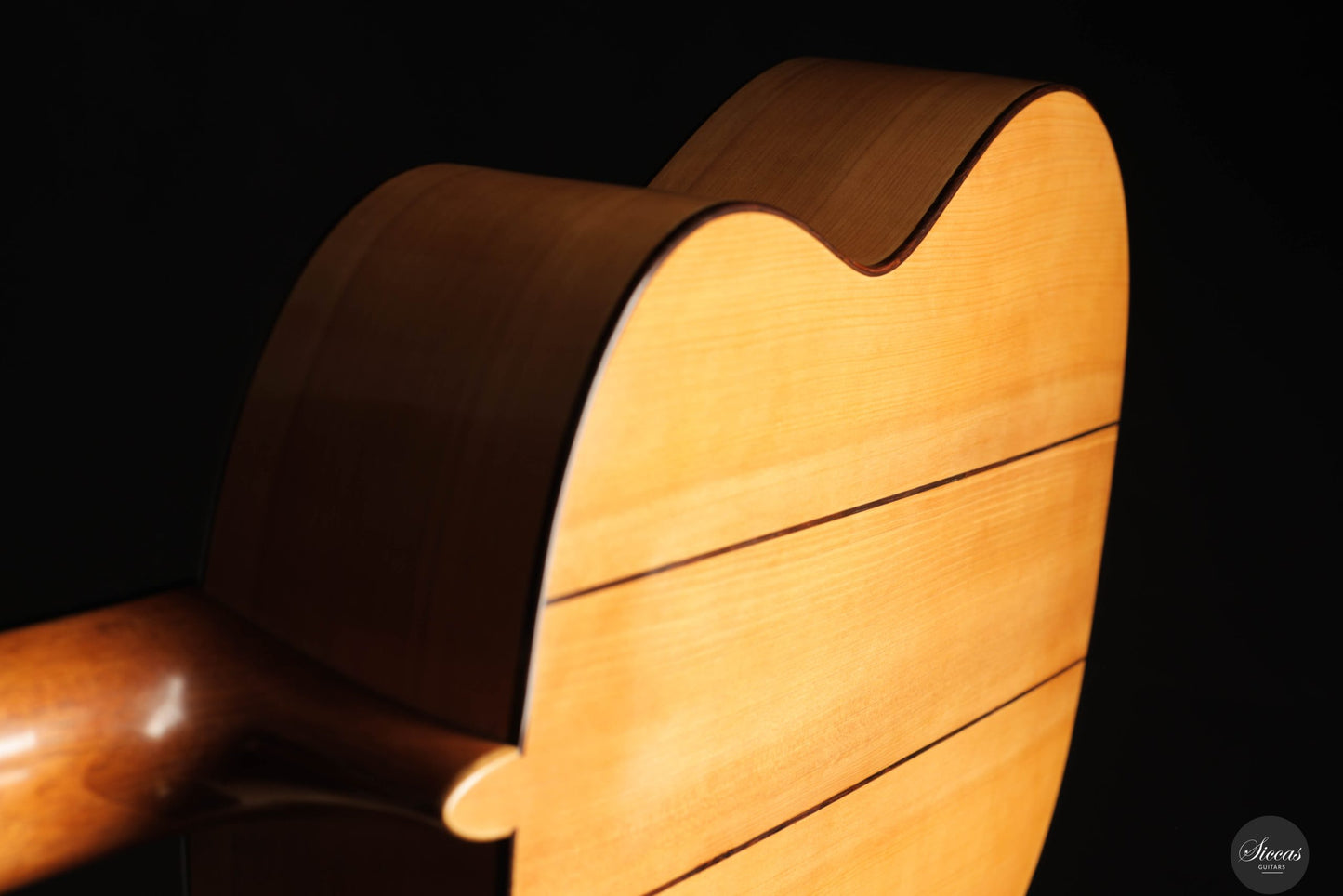
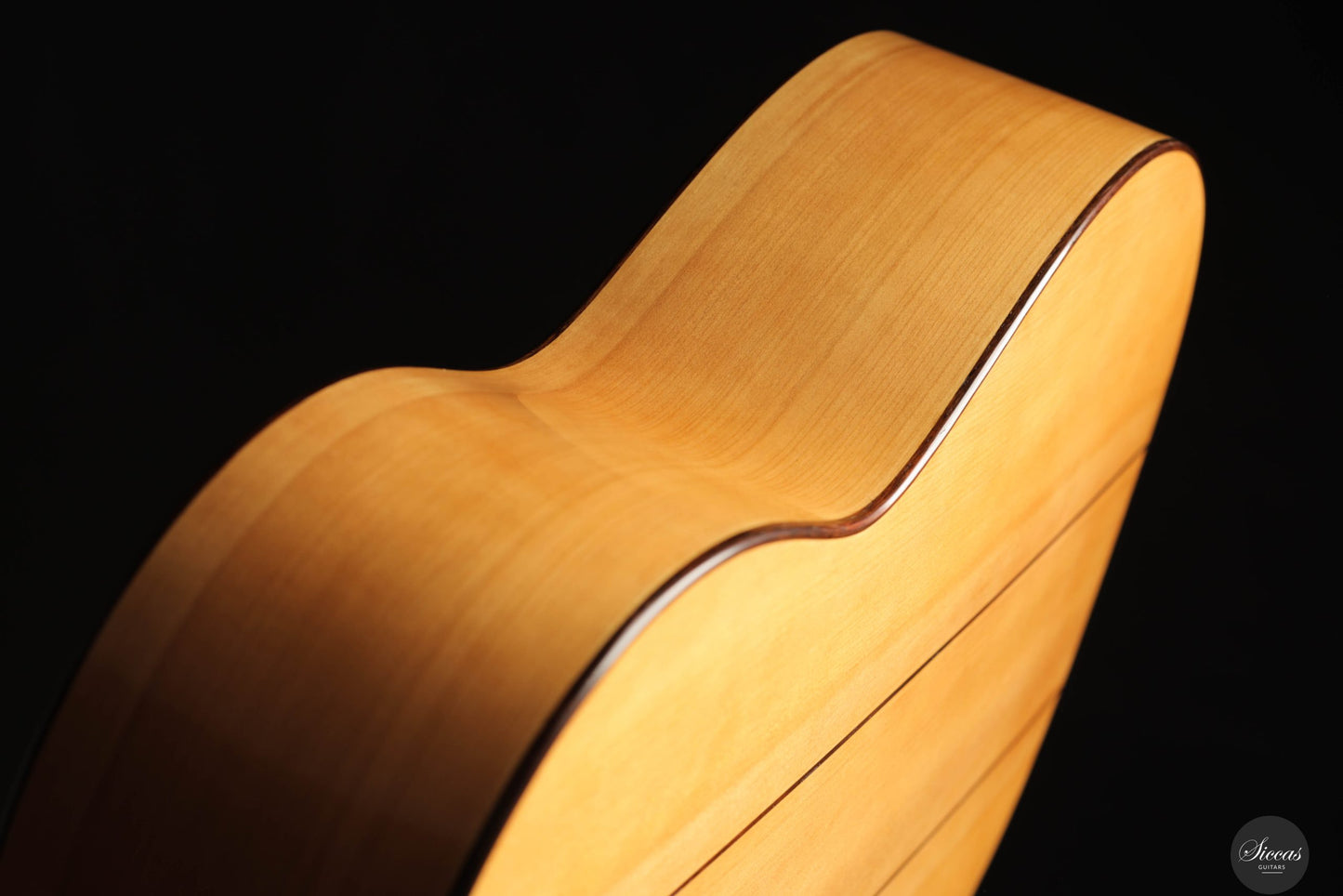
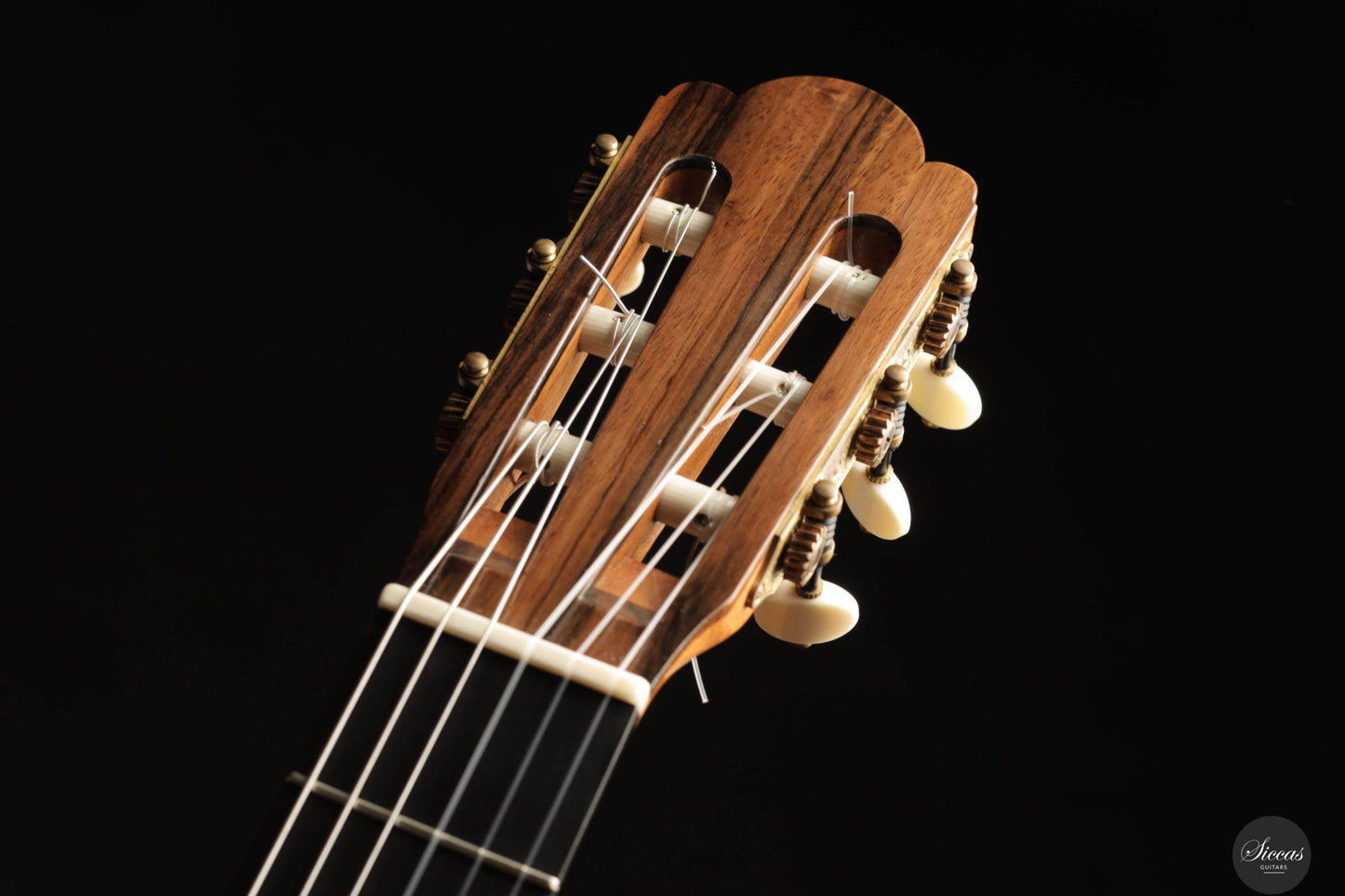
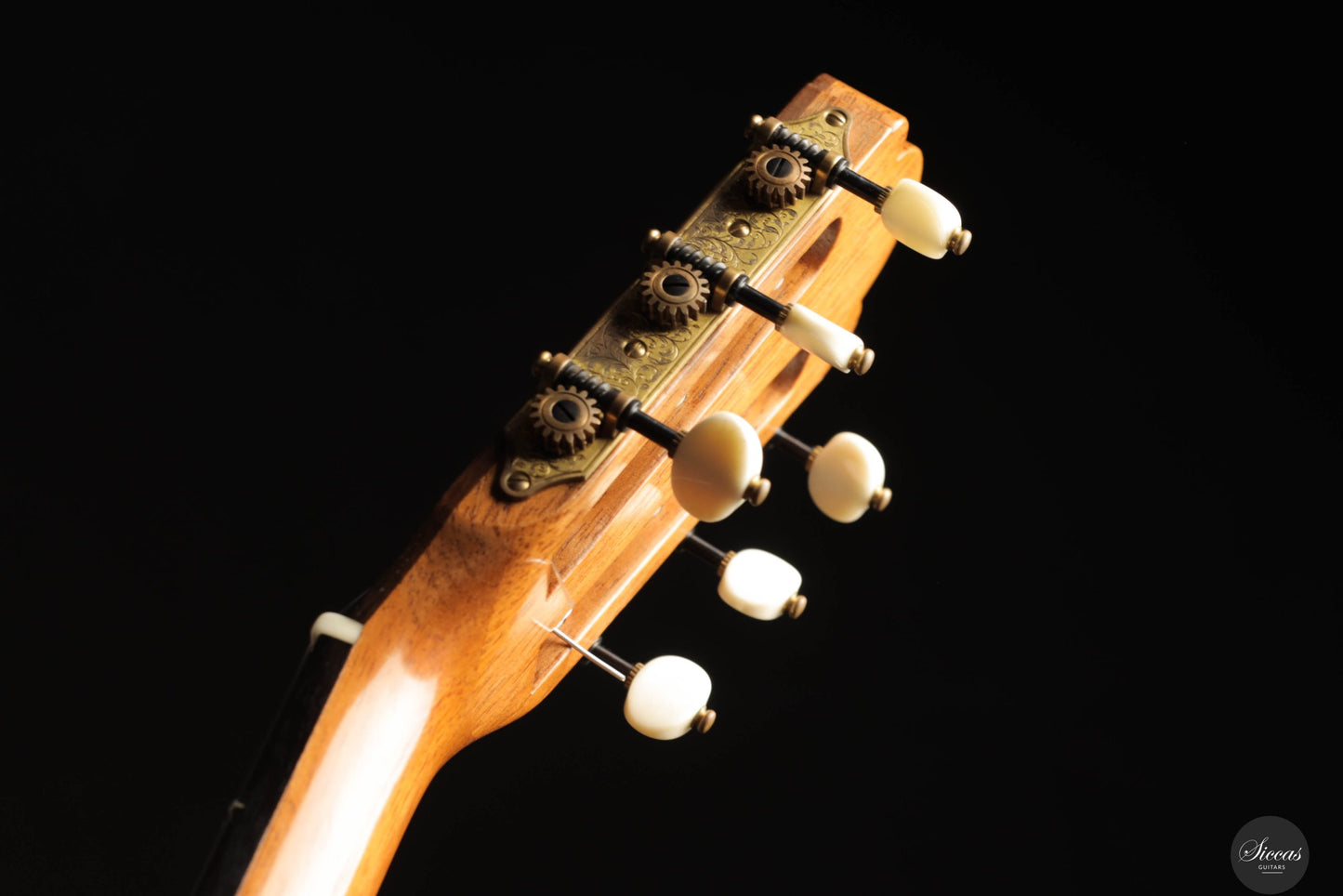
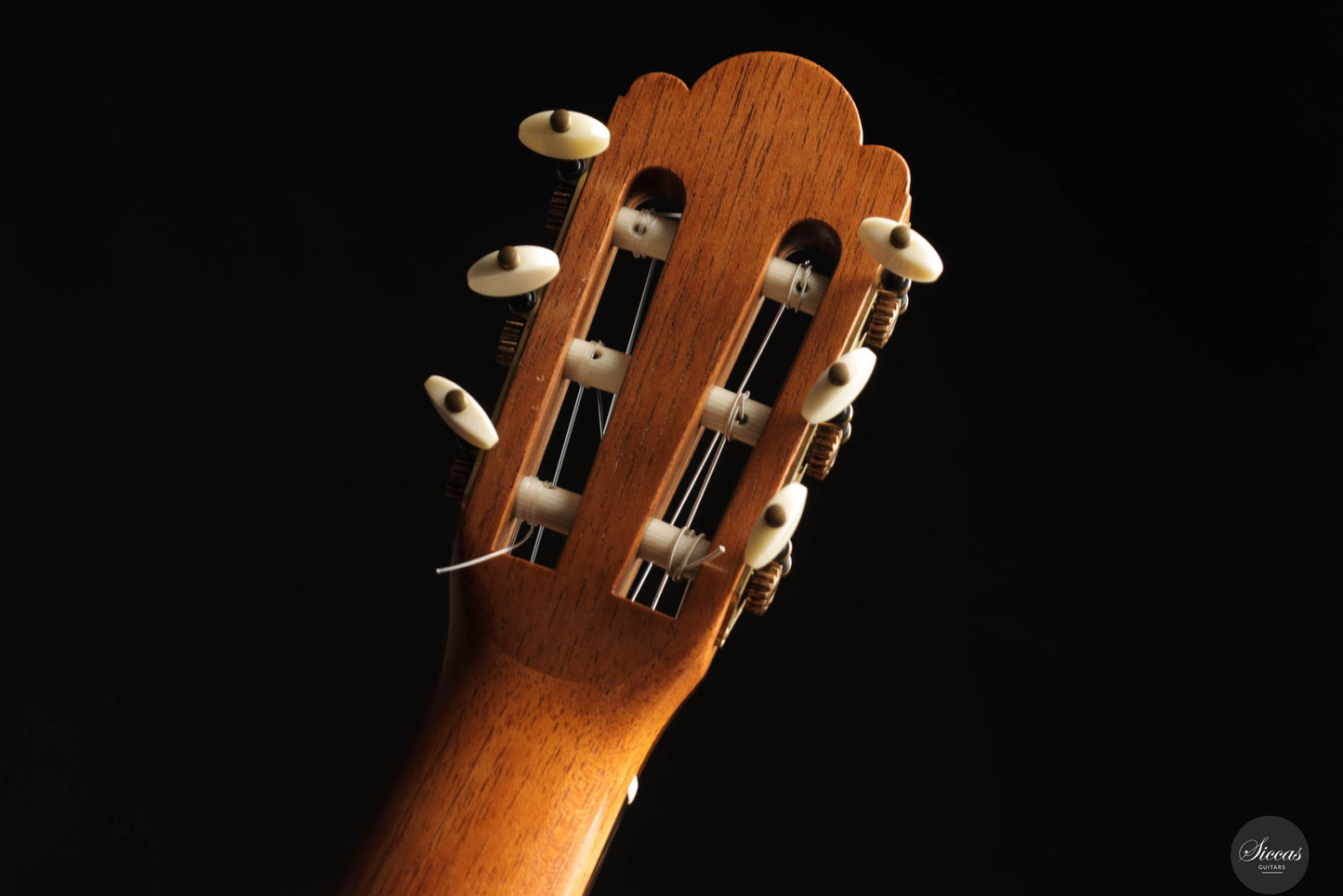
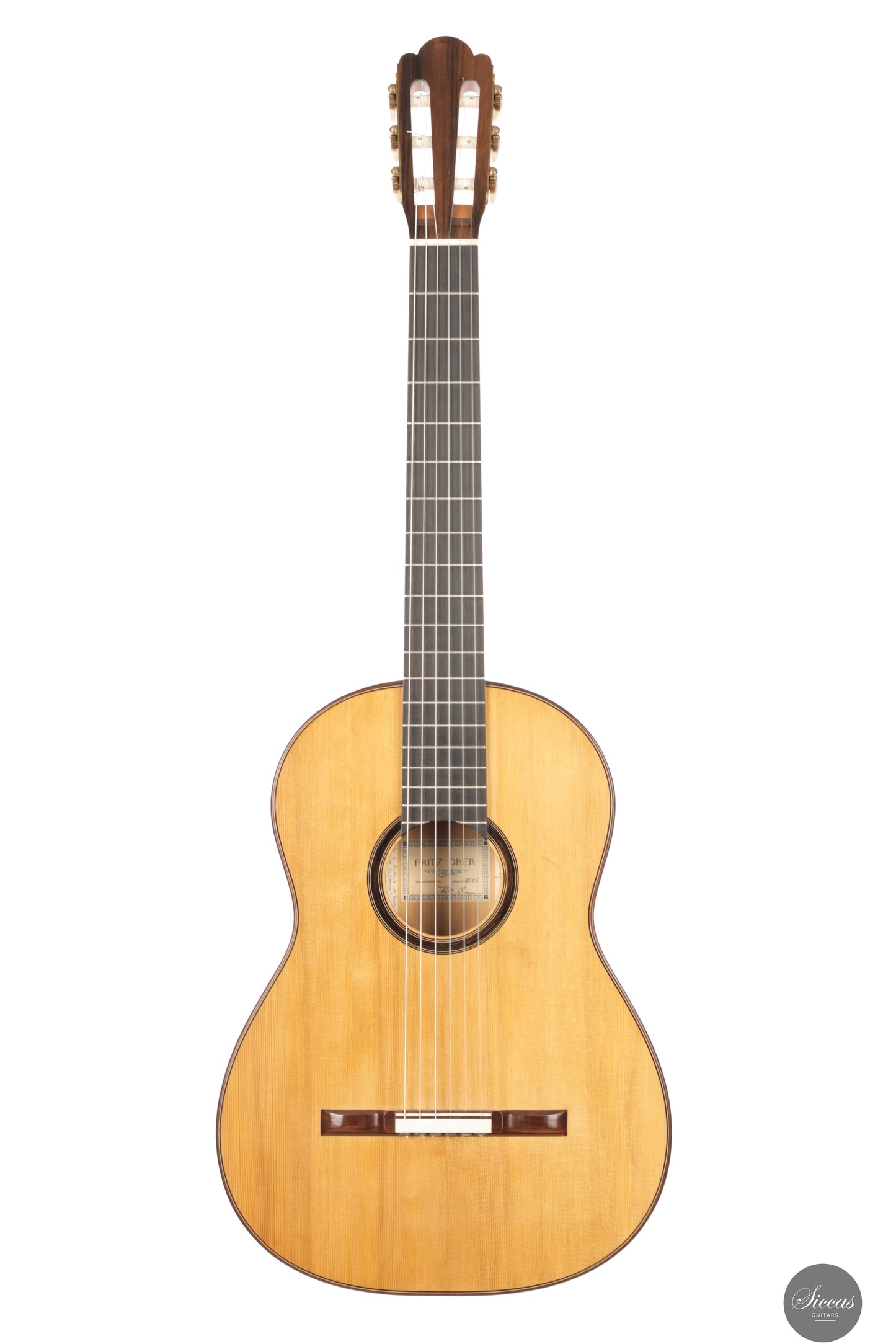
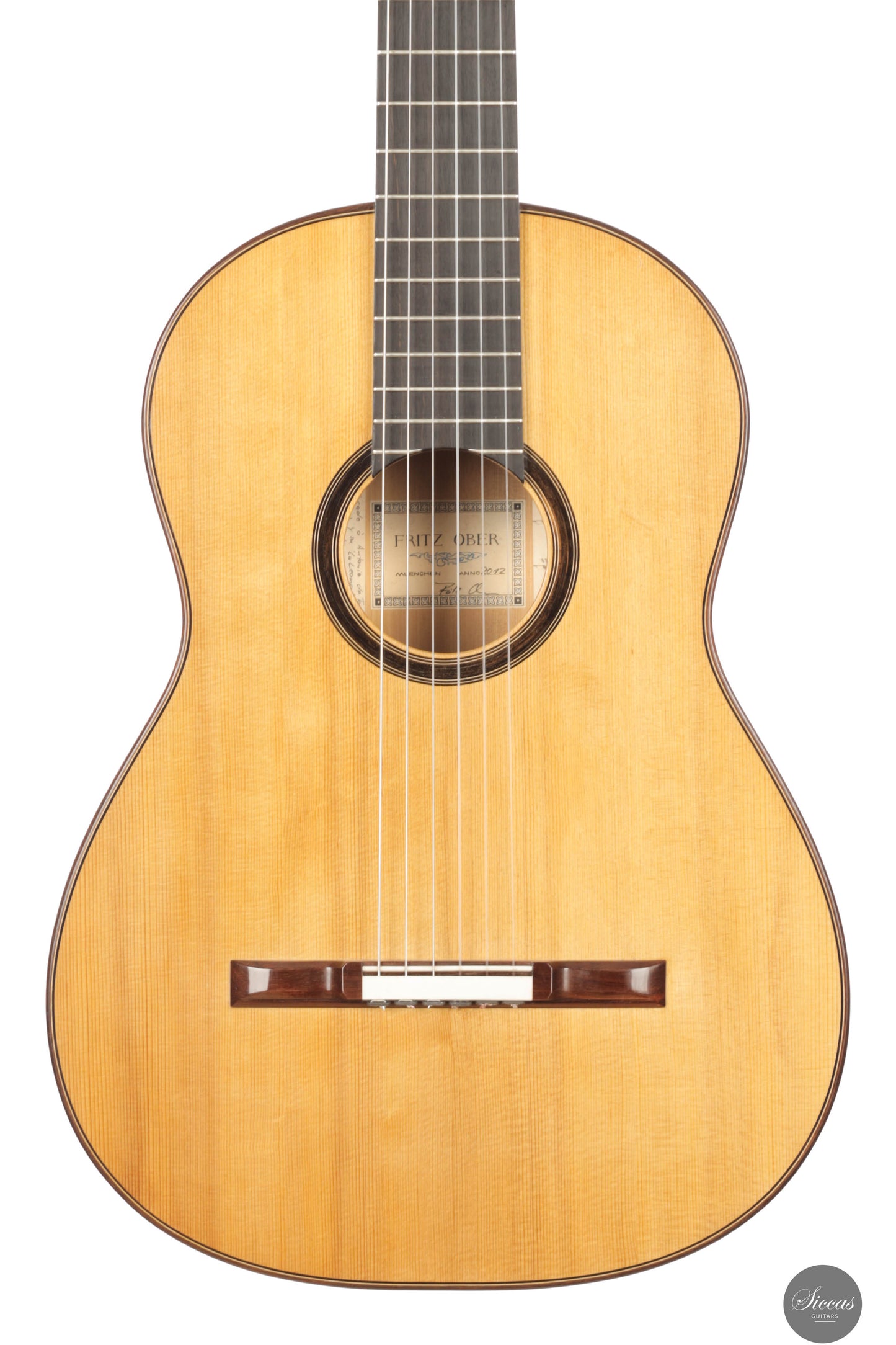
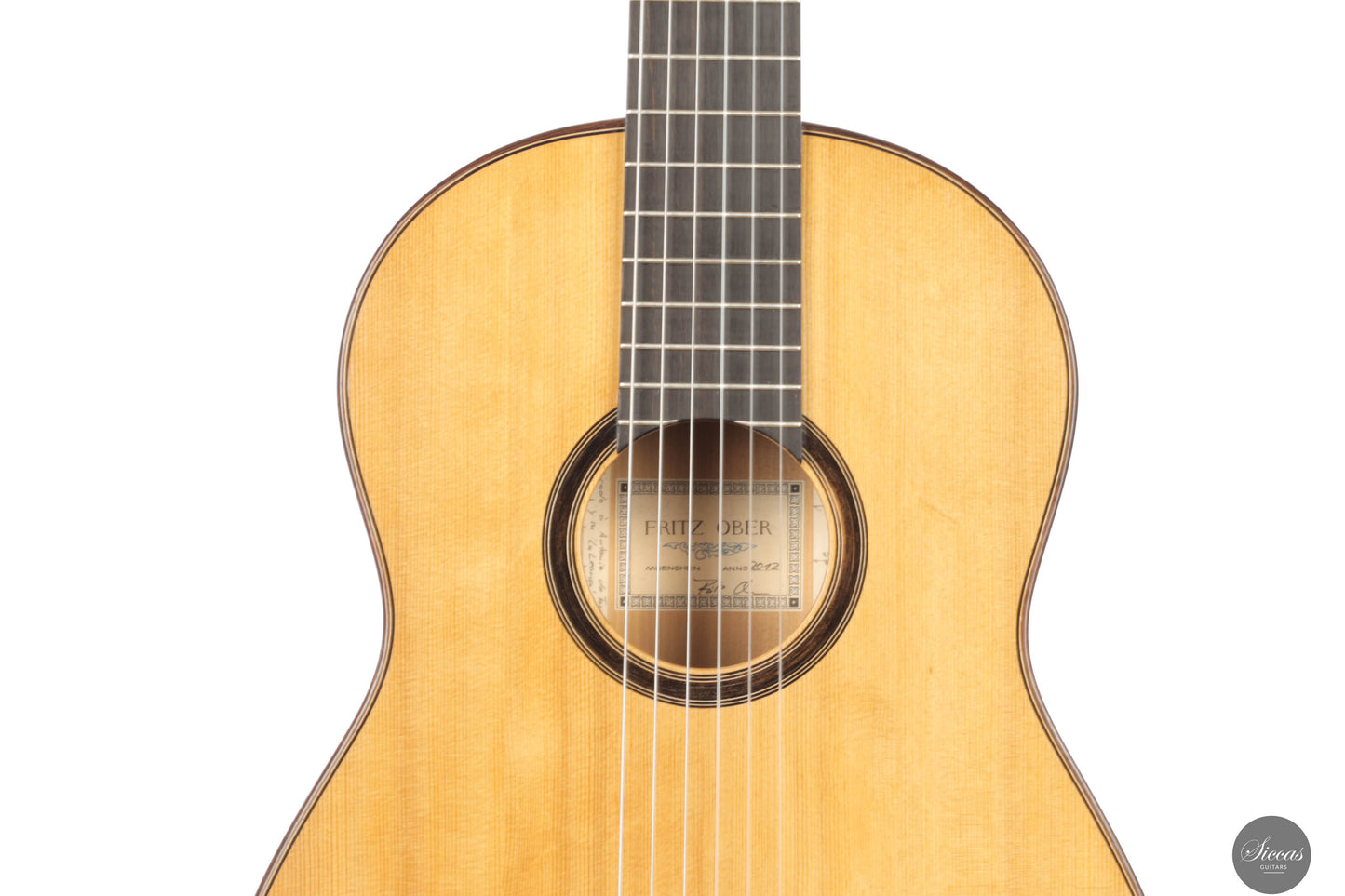
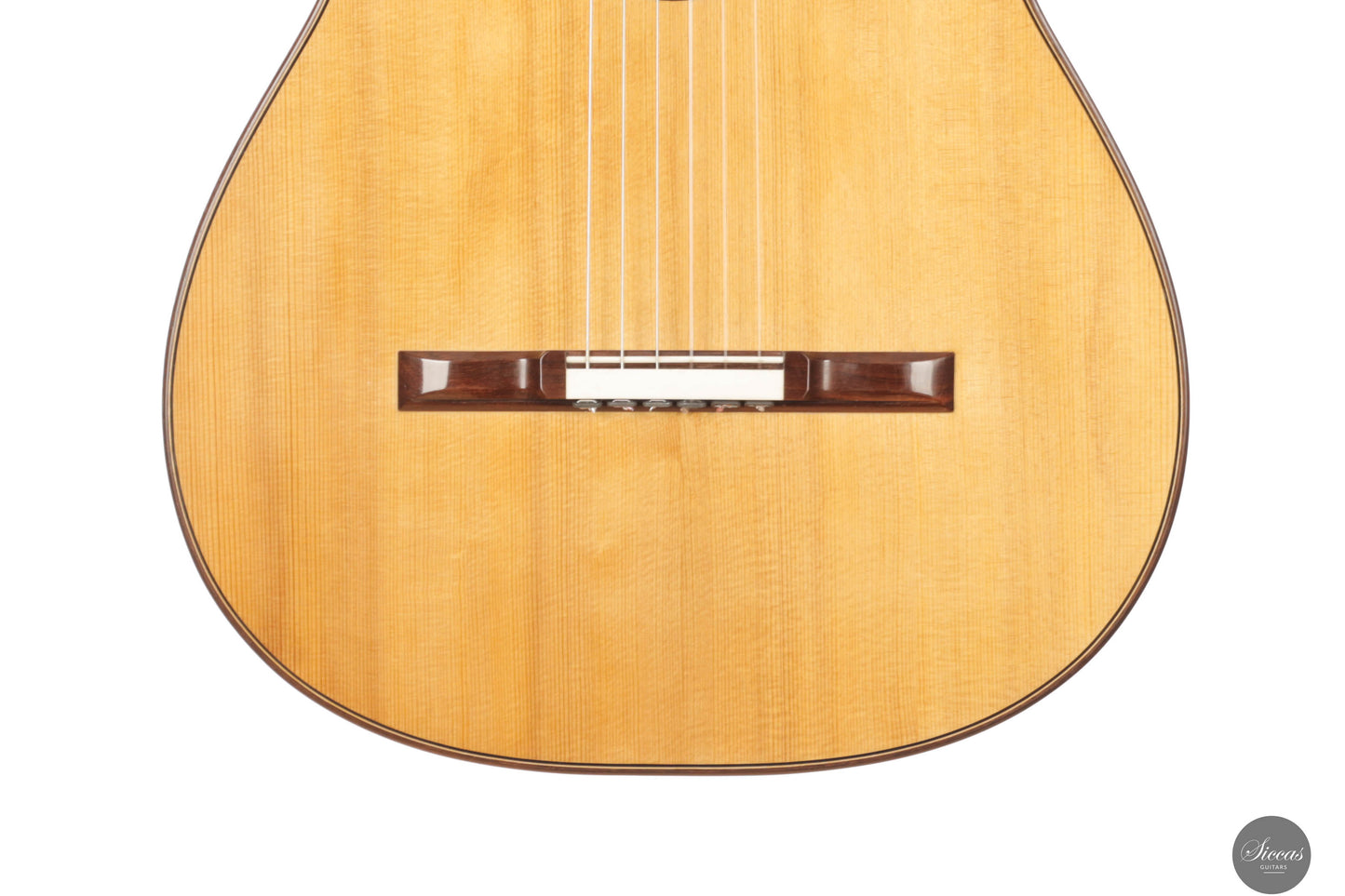
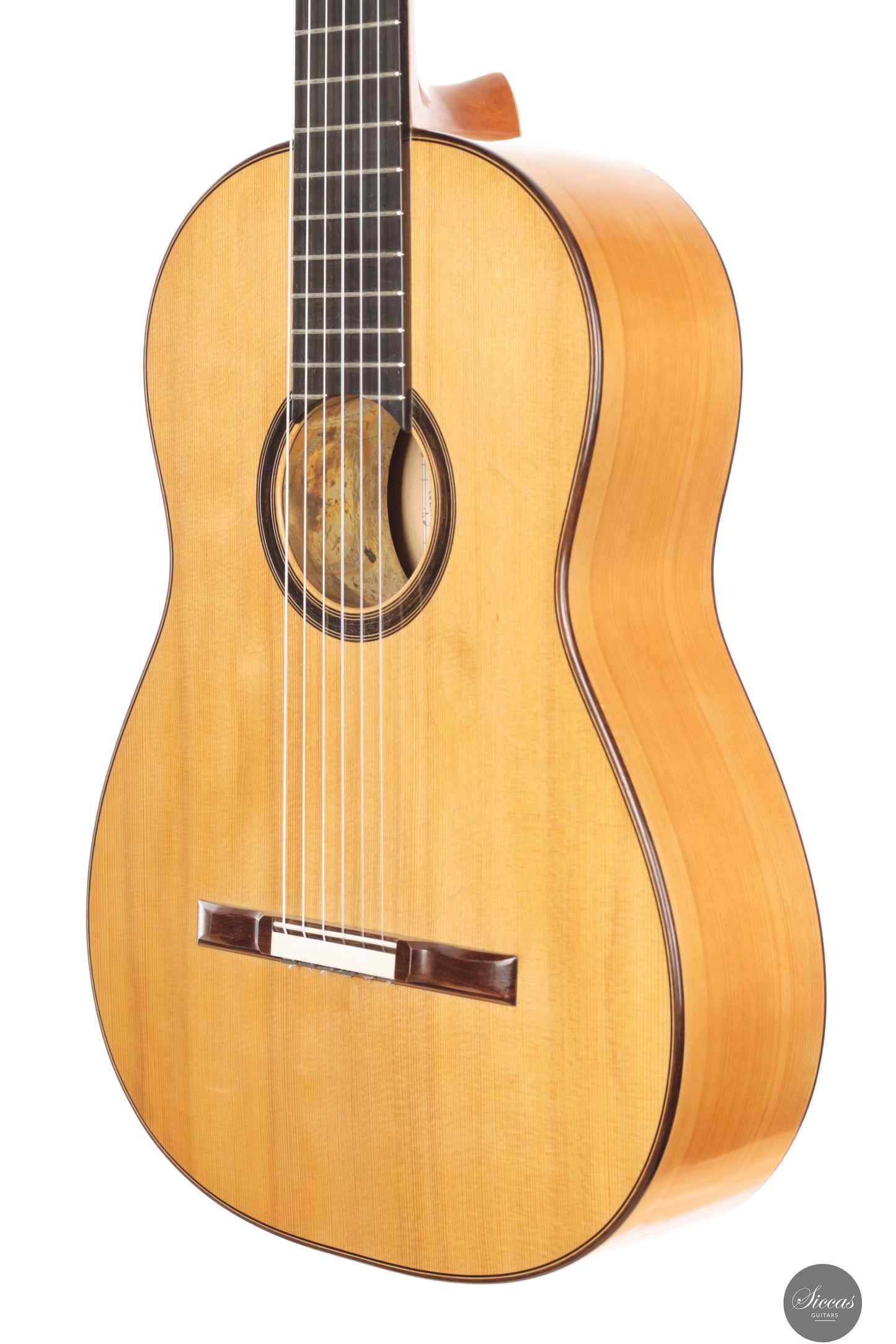
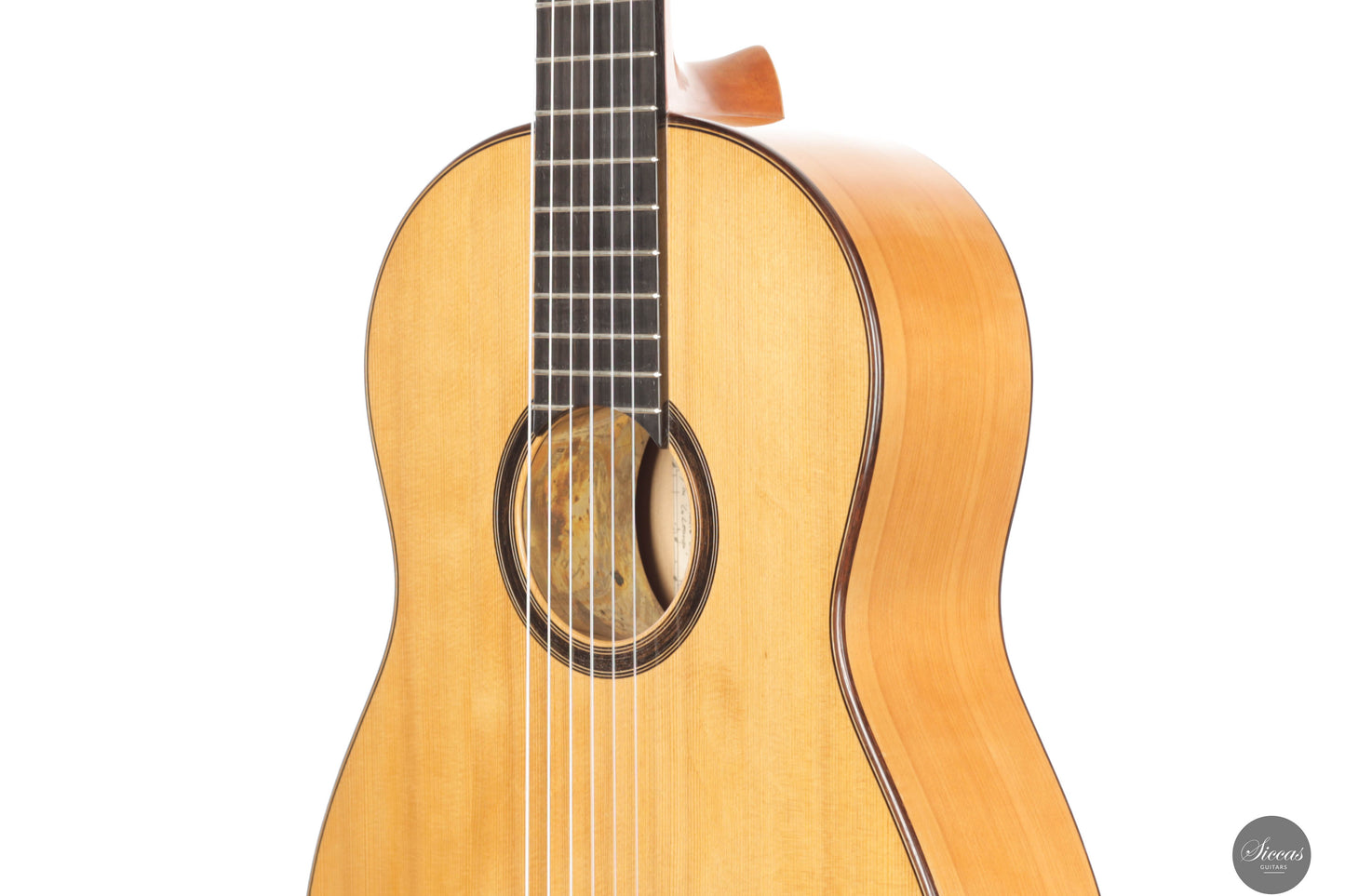
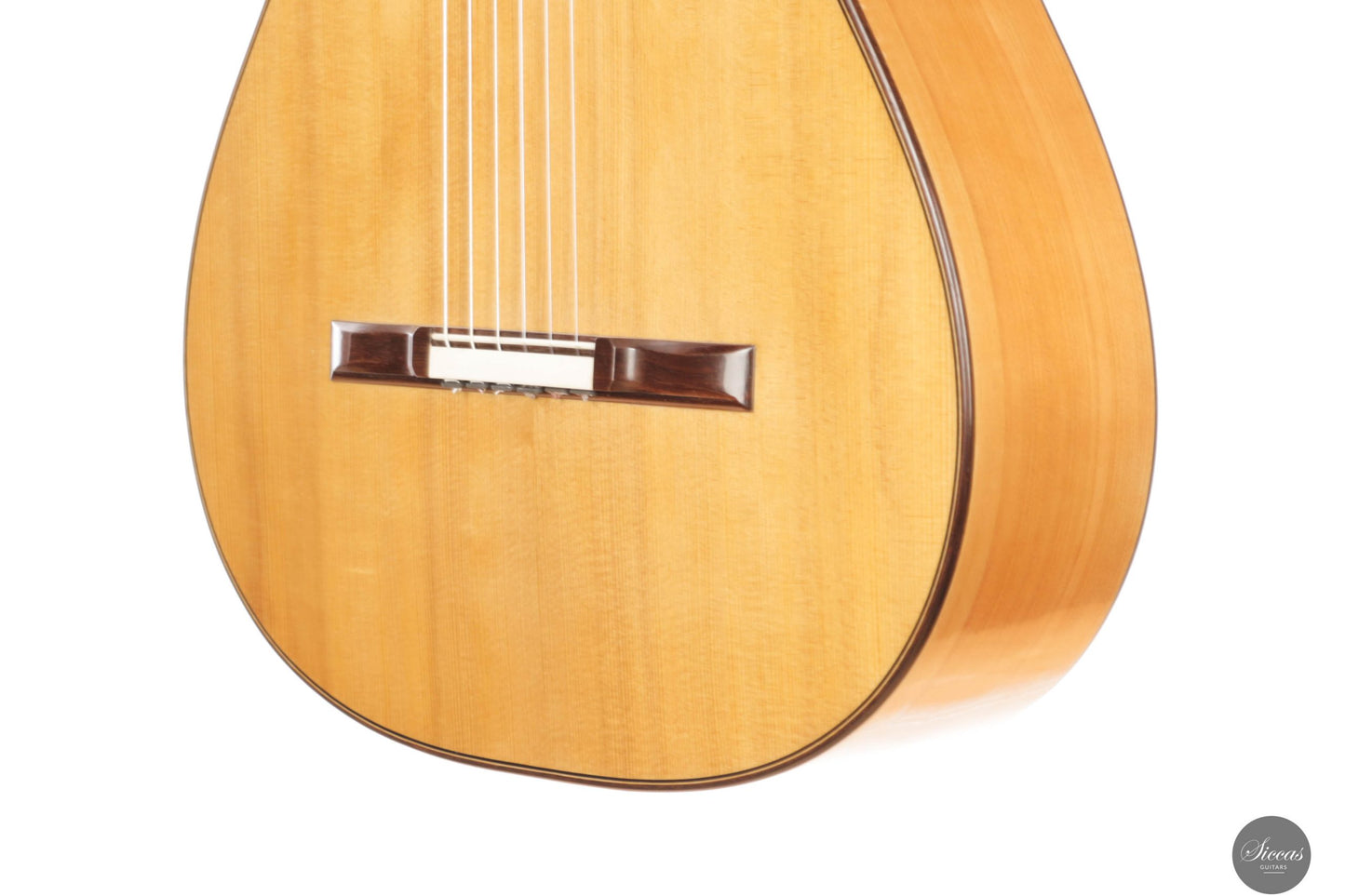
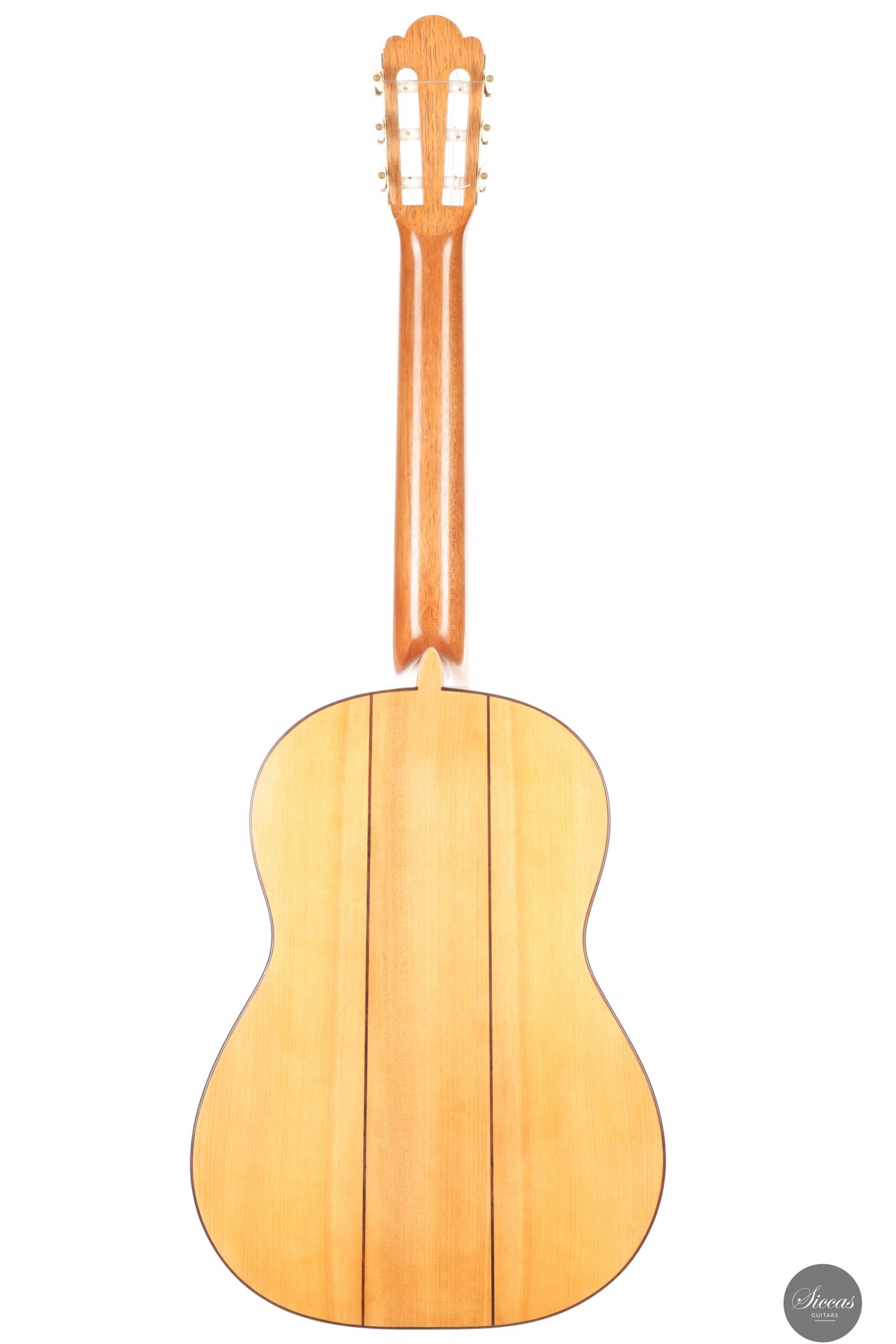
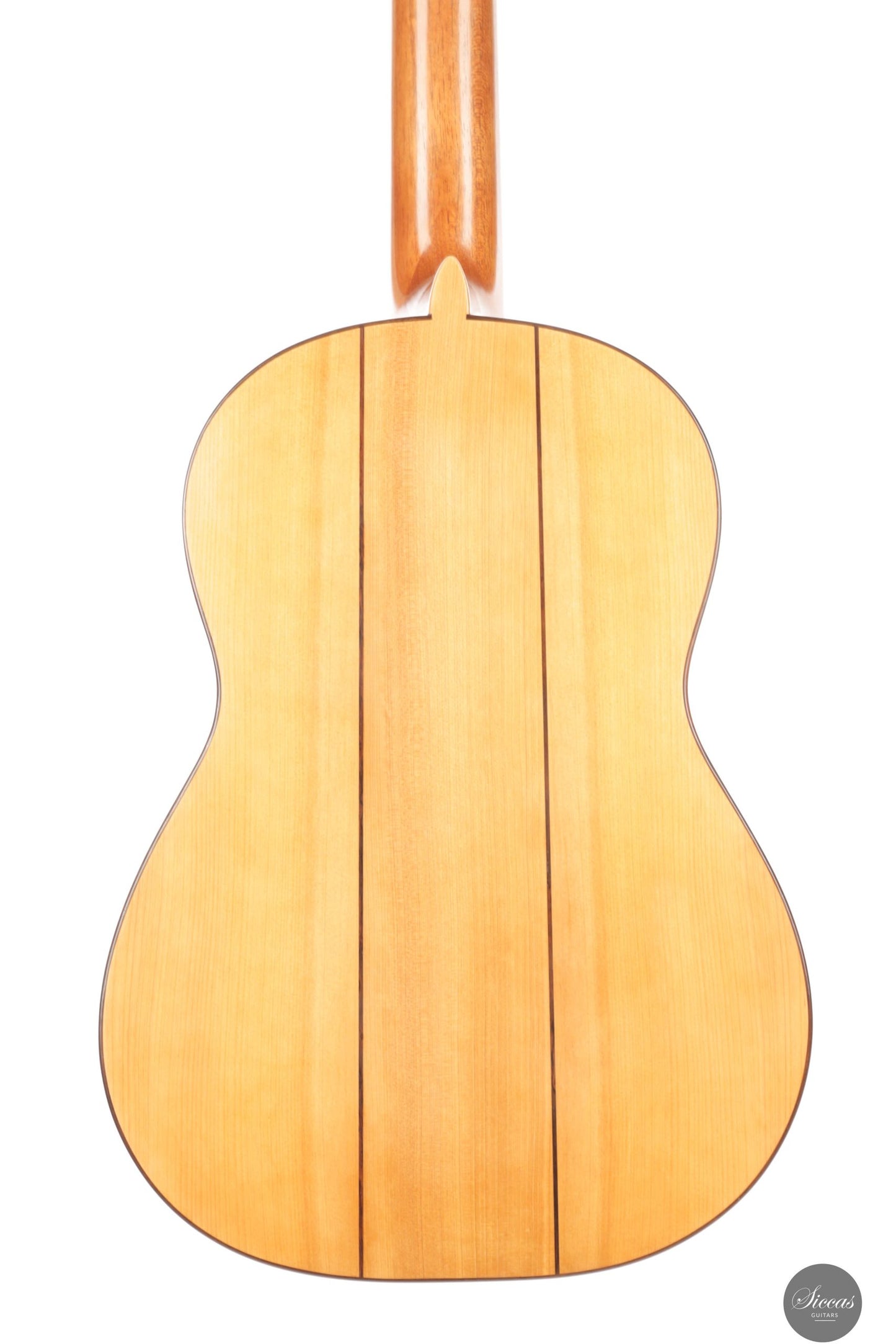
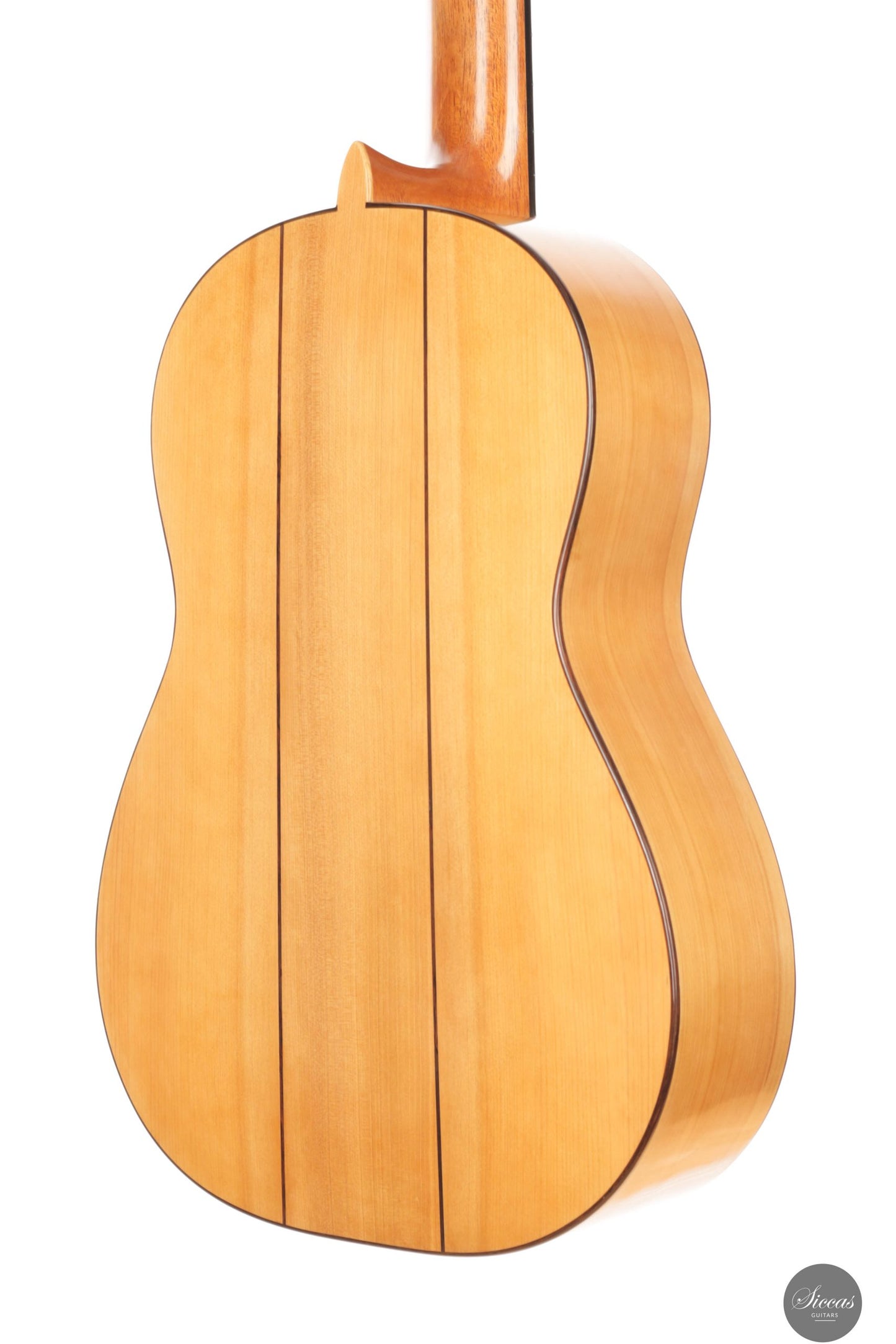
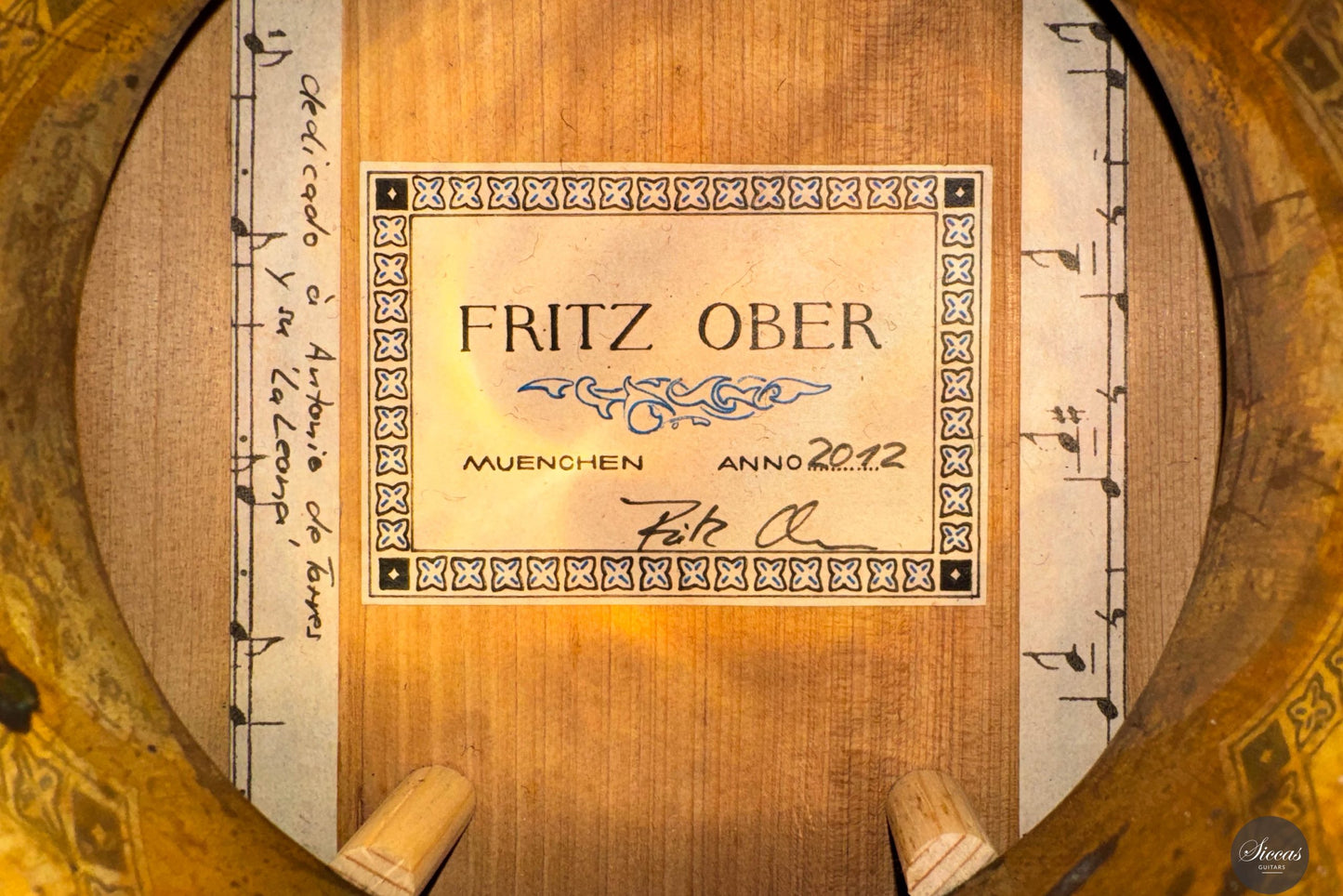
Video overview


More details about the guitar
About the luthier
Fritz Ober was born in Rosenheim in 1955 and learned to play the guitar at an early age. He built his first instruments in the 70’s based on guitar building books. Later he trained with the instrument maker Helmut Buchsteiner and initially focused on the construction of lutes. According to his own statements, the skills he acquired were decisive for his approach to guitar making, which was inspired by old masters such as Antonio de Torres.About the guitar
This exceptional guitar is a highly accurate replica of the legendary “La Leona”, built by Antonio de Torres in 1856 (FE-04). Several features distinguish the original from the rest of Torres’ output: it was the first guitar Torres built with a tornavoz, producing such a large, resonant tone that it earned the name “La Leona” (The Lioness). It also features a lightweight, carved bridge with no saddle, meaning the strings run straight from the tie block to the nut without any break angle. Internally, the guitar lacks the lower harmonic bar, a brace normally essential for top stability. Instead, Torres ingeniously used two small wooden posts to support the tornavoz, resting against the back—allowing the soundboard to resonate more freely while transferring vibrations throughout the entire body. The result is a guitar that vibrates across the top, back, and sides, offering a uniquely lively and resonant playing experience. In 2006, Fritz Ober encountered the original FE-04 “La Leona” when it came to him for minor repairs. Deeply impressed, he was given the opportunity to study and document the instrument over the course of a month in his workshop—leading to what would become his first and possibly only replica project. Fritz built only a handful of these La Leona replicas—perhaps around five in total—making this one of the rarest guitars he has ever made. This replica is true to the original, with only subtle adjustments: a slightly thicker neck, the inclusion of a saddle, and a headstock design suited to modern tuners (the original had pegs). Like the original, the guitar offers an exceptional tonal palette, rich dynamics, deep, resonant basses, and clear, singing trebles, with remarkable clarity across all registers.Condition
The guitar is in excellent condition, with no structural issues and only minor playing wear. A faithful and masterful tribute to one of the most iconic guitars in history.Regular care extends the life of the instrument
Even with careful use, a classical guitar may gradually change in appearance or respond to unstable storage conditions. Have a close look at your guitar regularly and be attentif to changes. If your instrument is suffering from its environement, it will let you know.
Protect Your Guitar: Handle with Care
Be mindful when touching your instrument with greasy or unwashed hands: any skin contact is a small attack on the varnish. Of course, a guitar is made to be played, but taking a few precautions helps preserve its beauty: wash your hands before playing, wear long sleeves, and avoid unnecessary direct skin contact with the body of the instrument.
Pro tip: Avoid playing with a button-up shirt, heavy jewelry, or a belt, as these can scratch the guitar. Also, make sure your guitar case is free of any objects that could damage the instrument during storage.
String care
A good habit to adopt is wiping down your strings briefly after each playing session. This small action significantly extends their lifespan and helps maintain a consistent, comfortable feel under your fingers.
Most importantly, clean strings are essential for keeping your instrument in tune. Corrosion, sweat, and dust can affect the uniformity of the strings and interfere with accurate tuning across the entire fingerboard.
Pro tip: If you're having trouble getting your guitar in tune, it might be time to change the strings. A useful test is to compare the pitch of the 12th fret harmonic with the fretted note at the 12th fret; if there's an unusually large gap between them, your strings may have lost their integrity and should be replaced.
Keep Your Shellac Finish Shining!
Got a guitar with a shellac (French polish) finish? Here's a simple trick: Take a clean microfiber cloth and gently breathe on the surface to create a light mist. Then, softly rub to remove fingerprints, sweat, and grease. That’s usually all it takes to keep it looking great, no products needed!
Pro tip: Every few years, treat your guitar to a check-up with a luthier to keep it in top shape.
Storing Your Guitar: Climate Matters
Your guitar can safely stay outside its case, as long as the surrounding environment maintains 42–55% humidity and a temperature between 18–25°C.
Keep in mind that humidity levels can still fluctuate inside the case, especially during seasonal changes.
- Too much humidity may cause overtightened strings and a dull tone.
- Too little humidity can lead to a bulging top, string buzz, or even cracks.
Avoid placing your guitar near radiators, air conditioners, or windows with direct sunlight.
Pro tip: Always close your guitar case while playing. This helps preserve a stable microclimate inside the case, so your instrument is protected the moment you put it back in.





























































